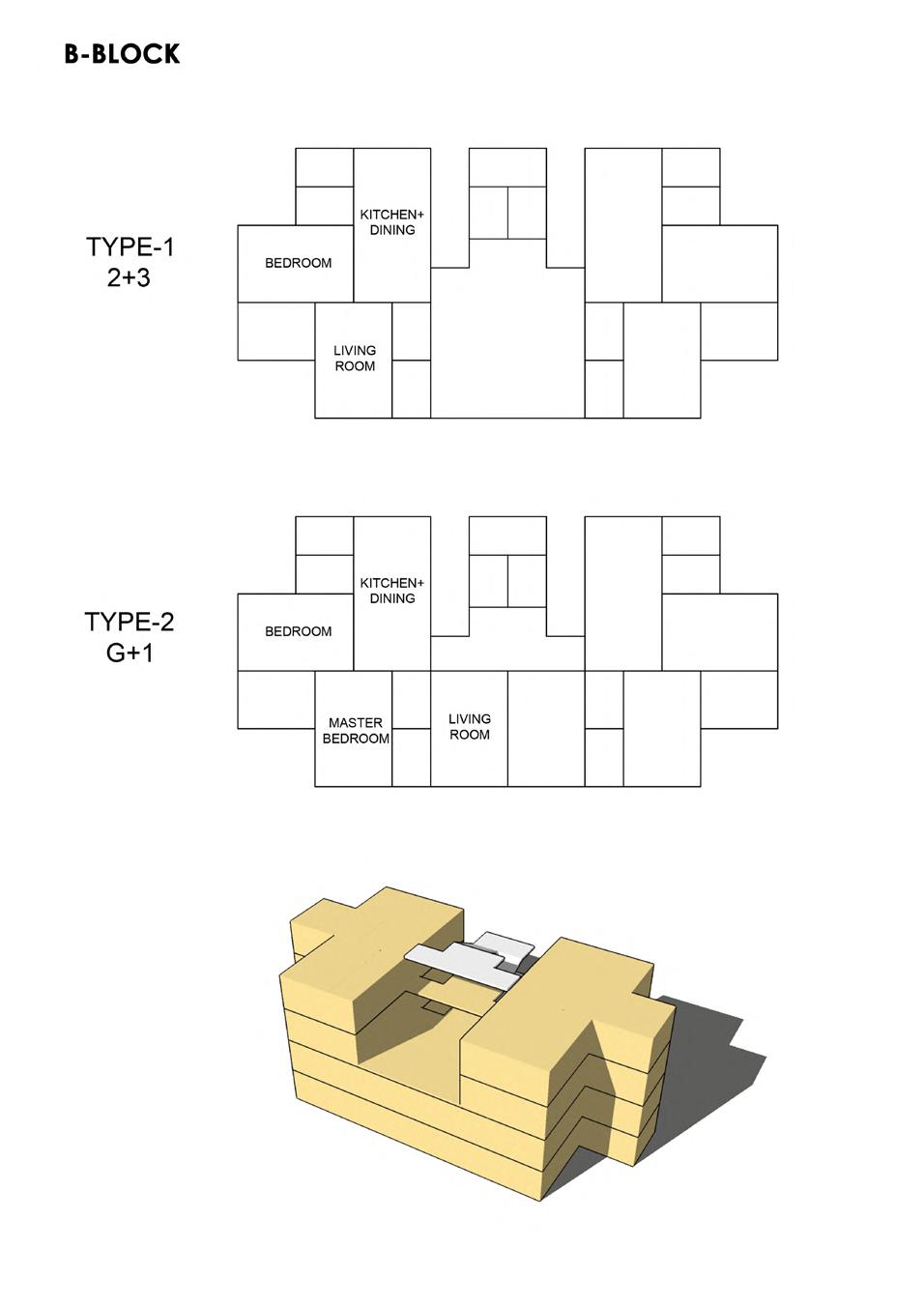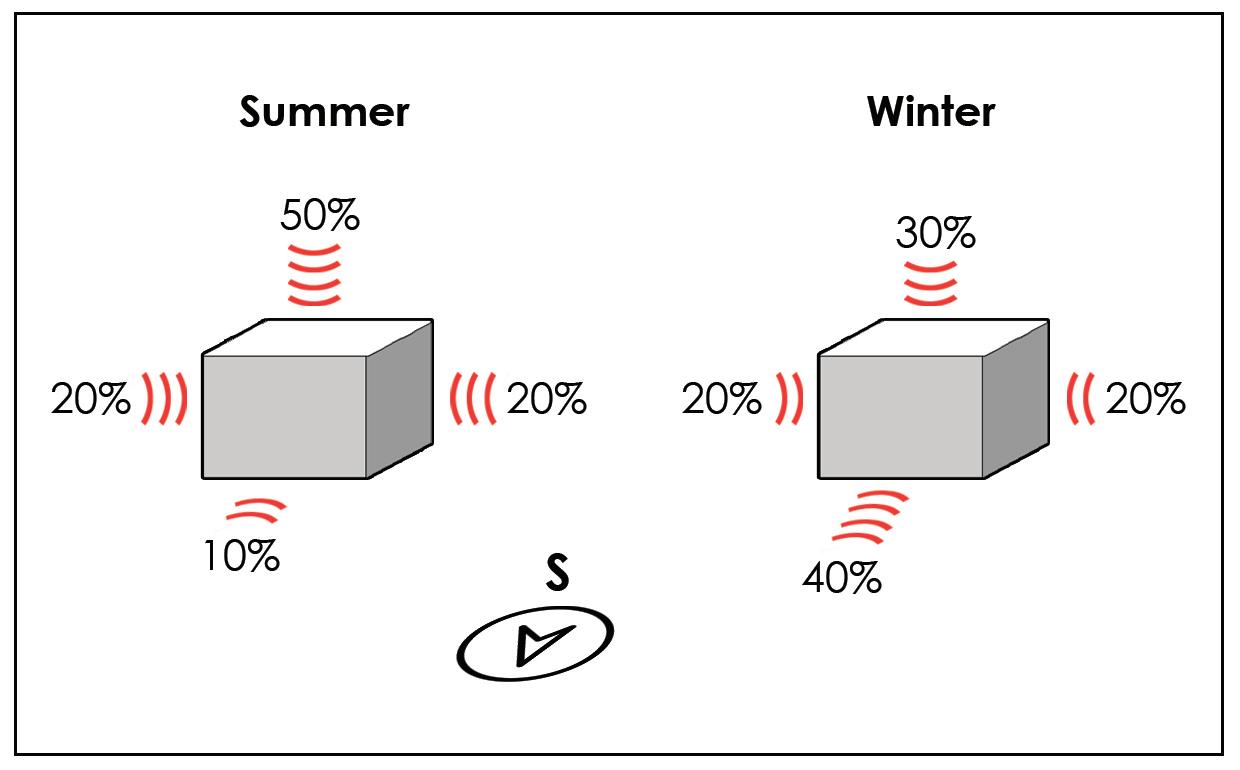
3 minute read
2. PROPOSITION
In the last decade, Leh experienced a boom in tourism and demand of guest houses and hotels increased rapidly resulting in locals opting for a material which allows a faster speed of construction, concrete. We have already established how the construction industry is responsible for a large percentage of air and water pollution. Moreover, it also consumes a lot of water in preparation, curing, etc. which has overused the amount of water available in the already water scarce region. This pollution contributes to global warming which in turn is leading to climate change in the region. The climate over Leh shows a warming trend with reduced precipitation in the current decade. (Chevuturi, Amulya & Dimri, 2016)
Rapid urban growth has also led to the inevitable depletion of natural resources, water being the affected the most. Leh is a cold dessert with an annual rainfall of less than 10mm, the only source of water for the city is the glacier melt. The renewal rate of water cycle finds it impossible to match up to the usage rate of water, resulting in depletion of water table each year.(Ladol Padma, 2019) Soon, agricultural production in the Leh valley will decline to such an extent that villagers will need to migrate to other cities for employment, therefore there is an urgent need for sustainable architecture which focuses on the judicious use of resources and energy.
Advertisement
The boom in tourism industry attracted native population from neighbouring villages and towns to migrate to Leh city in search of new job opportunities and due to this increase in population the government is trying to set up adequate amount of social and physical infrastructure in and around the city to cater to its needs.
This creates a demand of large scale housing for natives of neighbouring areas, non-natives from far away regions, and government officials appointed to work for the city. All the above mentioned groups require affordable homes which need to be made available as soon as possible. Problem Statement: To design a cost effective housing solution that caters to the growing population of Leh city that can withstand the extreme cold and harsh climate and at the same time is socially, economically, and environmentally sustainable.
PROPOSAL:
CPWD GOVERNMENT HOUSING QUARTERS
The Trans Himalayan region of Ladakh recently got separated from Jammu and Kashmir and acquired the status of Union Territory. This opens up opportunity for a great amount of development in the area, especially in Leh, the capital. The first step of the newly elected Lieutenant governor would be infrastructure building for the entire city. Several new government offices need to be set up and housing needs to be provided for this immigrating population.
This is not just another generic government housing project. This is the first CPWD housing project in the new Union territory of Ladakh and thus, will serve as a reference for all future projects in the region. Union Housing and Urban Affairs Ministry has sought a detailed proposal from the local administration to execute various development projects in Leh and Kargil regions. An official said the ministry is also contemplating to include these two regions under its ‘Smart City Mission’, a flagship programme of the government.
The Central Public Works Department (CPWD), a prime construction agency of the central government, offered the Jammu and Kashmir administration assistance in building “economical” and “best quality” infrastructure in the two union territories.
The CPWD is in full swing to make this proposal a benchmark for low cost housing construction which will be used as reference for upcoming housing projects in the region.
Additions to the proposal:
1. In addition to being low-cost, the project must be sustainable and energy efficient so that it is truly low-cost in the long run. This means that the construction should not create as much carbon footprint which could harm the sensitive ecology of the area; at the same time, it should handle the cold and harsh climate with minimum external energy for heating and electricity.
2. The process of construction can be optimized to maximize the efficiency of time and resource management on site. This itself could have a significant impact on the cost of construction.
3. Alternate materials which are locally available need to be explored and used in innovative ways to reduce the cost as well as the carbon footprint of the project. We should examine vernacular construction techniques that were able to achieve harmony with the environment for hundreds of years.
4. Construction techniques that may be reusable or automated at a large could be explored to speed up the process even more and increase the design’s (element or module) reusability in future projects of the CPWD.






